|
|
|
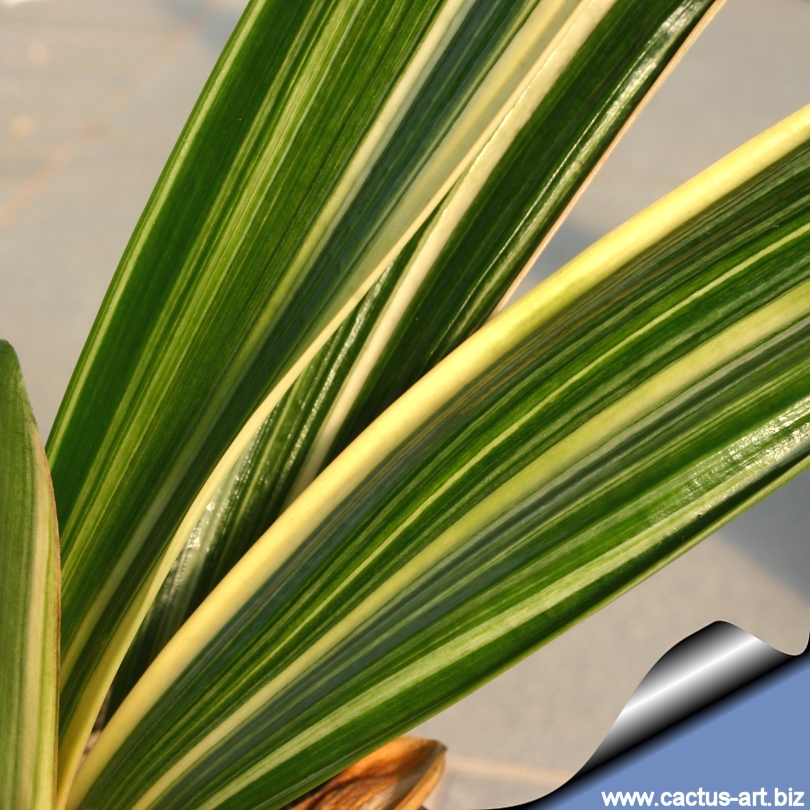
It has broad shiny leaves striped with various colours of
white, cream, and several shades of yellow and green. It is extremely
decorative even when it is not flowering.
|
|
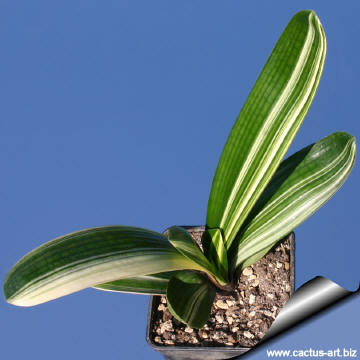 |
 |
|
. |
|
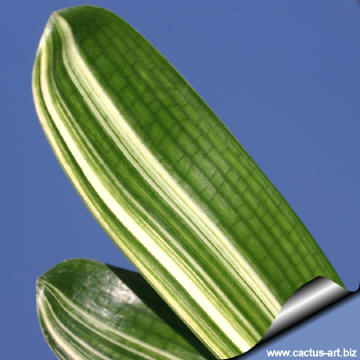 |
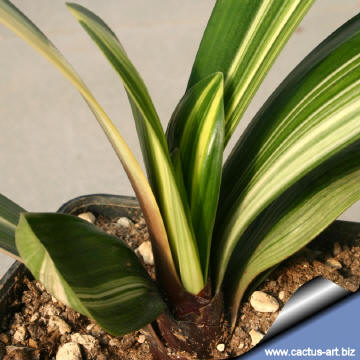 |
|
. |
|
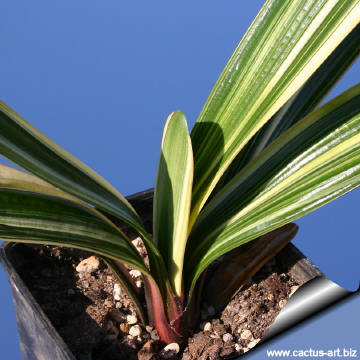 |
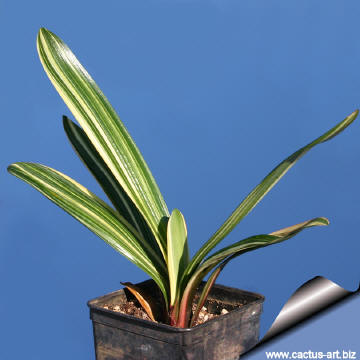 |
|
Some plants have many fine stripes while others have wide bands of
cream or yellowish-white colour.
The amount of variegation usually improves with age. It catches the eye
of everyone that sees it. |
|


Advertising
|
|
|
|
|
|
|
Family: Amaryllidaceae
Scientific name: Clivia
miniata (Lindley) Regel
Gartenflora 14: 131, t.434.1828
cv. 'Chinese Five Color Orchid'
Origin:
Garden origin (Nursery
produced cultivar)
Common English Names include: Variegated bush lily or
Variegated fire lily
Etymology: The genus Clivia gained in honour
of Lady Charlotte Florentina Clive, Duchess of Northumberland.
Synonyms:
- Vallota Miniata Regel
The Gardener's Chronicle 8: 119.
- Imanthophyllum miniatum Hooker
- Himantophyllum miniatum Kook
- Clivia citrina
- Clivia kewensis
|
|
Description: The standard
Clivia miniata is a very popular plant commonly known as
the bush lily or fire lily and has orange flowers with yellow throats
and wide large dark green leaves. The variegated Clivias are very
desirable plant but still rare.
The cv 'Chinese Five Color Orchid' is one of the best new
introduction, it is similar to the usual, large flowered, orange clivia
except that it it has broad shiny leaves striped with various colours of
white, cream, and several shades of yellow and green. It is extremely
decorative even when it is not flowering. Some plants have many fine
stripes while others have wide bands of cream or yellowish-white colour.
The amount of variegation usually improves with age.
Clivia is related to the common Amaryllis. However, unlike Amaryllis,
Clivia retains its foliage year round and is thus a valuable and
decorative houseplan
Stem: The stem of the clivia miniata is a compact
rhizome which only rarely becomes aerial when plants are very old. It
sucker freely and can form large clumps if left undisturbed.
Roots: Swollen, succulent.
Leaves: 50 mm to 90 mm wide. Up to about 1 metre in length
(or more)
Flowers: Small to large and trumpet-shaped with broad overlapping
tepals. The inner tepals are usually broader than the outer tepals. The
normal colour of the flowers is orange with a yellowish-white throat,
although a colour range from whitish yellow through pale oranges, dark
orange and approaching red is known. The very light and very dark
colours are, however, rare. The flowers are borne in an umbel supported
by a peduncle which clears the leaves, and the umbels can have in excess
of 40 flowers, although 20 is more usual.
Blooming season: Spring to summer, once the flowers are mature
which will be in approx 3 years.
Fruits: The seeds are carried in berries which can have from 1 to
more than 20 seeds in a berry, although less than 10 is the norm.
|
|
|
|
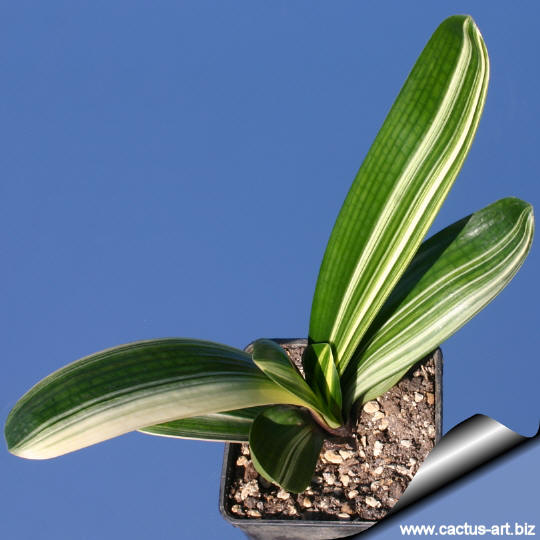
These very showy and delightfully colorful plants brighten a clivia
collection by contrasting their highly variegated foliage with that of
the deep green types.
Cultivation:
Clivias are outstanding houseplant; easy to grow, need little care and
flower late winter.
Be aware that full sun will burn the leaves. They need some shade and
require far less sun than most flowering plants. Clivias should be
potted in a rich, but well well-drained soil (for example: peat, fine
pine bark mulch and lava great ) a pH 5.5-6.5 best suits them. The soil
should never become soggy or water sodden, but should drain well even
when watered often. Placing one or more small, empty pots upside down on
the bottom of the container will enhance drainage. Do not plant them too
deep! The roots should be covered with only a 0,5 cm of soil. Regular
fertilization and regular irrigation are beneficial. Use balanced slow
release fertilizer, every three months, but any complete fertilizer will
do. If they are kept at room temperature and watered year round they
will grow into lovely plants, but they will not flower. Inducing them to
flower is easy. In the Fall and Winter keep them cool 10į C. Keep them
dry to interrupt the growth cycle and initiate bud formation. I do this
from November until January giving water about once a month. Then water
less sparingly until flower buds appear after which they can be
displayed anywhere. They are a very welcome sight in late Winter.
Clivias bloom and perform best when allowed to become rootbound, so
donít overpot them in a pot that is too large, they rally love being
crowded in a pot, so leave them undisturbed for many years. Once your
plant blooms the first time, it will usually bloom about the same time
each year. They will grow well under trees, on the north side of your
house, in a shaded area in the greenhouse or in rooms of your house that
receives indirect light or curtain filtered light. Pruning: Remove old
leaves and stems.
|
|








